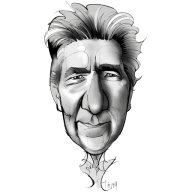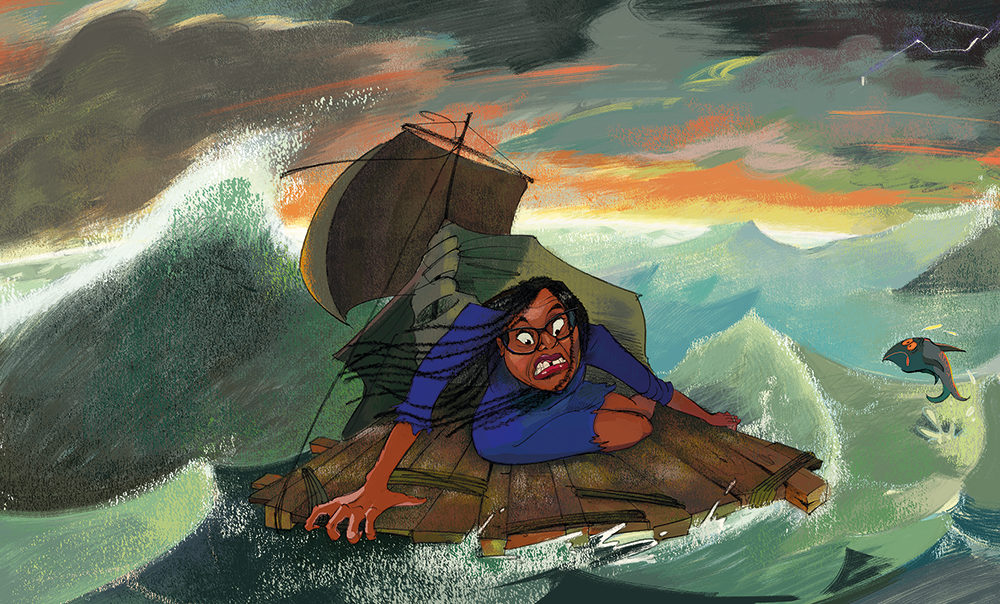
When I left university, I prepared for a short spell of poverty while I sent off amusing and opinionated articles to newspaper editors who needed the work of smart alecks like me to entertain their readers. My short spell of poverty lasted 17 years.
In the meantime, I survived on odd jobs, including a stint as a life model. ‘Starts at ten,’ said Piers, a friend who taught at a college in Kensington. Before my shift, I flipped through Ernst Gombrich’s The Story of Art in case a life model was expected to know the classical poses by heart. I imagined Piers starting me off with an easy one: ‘The Thinker’ by Rodin, or ‘Moses’ by Michelangelo, or ‘The Martyrdom of St Sebastian’ by Mantegna. Or he might challenge my scholar-ship by calling for ‘Laocoön and his Sons’ by Agesander of Rhodes, which requires the model to wear a look of tragic startlement while wrestling with two deadly pythons. And I rehearsed the most celebrated pose of all, Leonardo’s ‘Vitruvian Man’. Standing upright, gazing intently at the mirror, I extended my arms on either side of me. Naturally, I tried various time-settings. Ten to two, quarter to three, and so on.
I arrived early and found Piers arranging the seats in a semi-circle. He nodded towards a utility cupboard which doubled as my changing room. Inside, amid boxes of crayons and paints, I removed all my clothes. I could hear the students gathering on the other side of the door. Piers knocked sharply twice. ‘Ready.’ I turned the handle and walked out stark naked into the studio. All eyes swivelled towards me. A giggle was hastily stifled. I hadn’t been warned in advance that a professional model wears a robe which he discards at the start of the session. Instead, I’d just emerged through a side door as if I were a naked hermit who lived in the store cupboard.
Piers asked me to assume a comfortable upright position. Which annoyed me. All my arduous research had been wasted. Yet I felt immensely proud of myself for overcoming one of society’s deepest taboos by appearing unclothed in public and submitting myself to the scrutiny of strangers.
I confess I also felt unaccountably touchy and irritable. Some of the wannabe artists ignored me and fiddled with their bags or adjusted their appearance. A woman of about 20, a few inches from my knees, opened her mouth to receive a strip of Wrigley’s chewing gum. Her indifference enraged me. Surely, I thought, a naked adult male deserves a bit more attention than a traffic bollard.
Two rows behind her sat a plump, studious draftsman who was already at work. Good, I thought. My proportions were being immortalised with the swift and energetic strokes of this keen-eyed pupil. Then he stopped drawing, frowned, tore out the page and let it flutter to the floor. There it lay. Face up. My 34-year-old body was represented as a bony silhouette, like a concentration-camp victim, with a grotesque doormat of black chest-hair across my torso.
I’d just emerged through a side door as if I were a naked hermit who lived in the store cupboard
Having seen this abomination, I realised that its creator was not a sensitive and talented artist but a spotty, ill-favoured lummox. He removed his black-framed spectacles and wiped the lenses clean of the humid sweat that rose from his unwashed body. I hated him suddenly. And I hated my predicament. A writer posing for a pittance like a stripped slave. I hadn’t expected to be sketched by Lucian Freud, but I was deeply offended that this squinting stone-age throwback – who probably lacked the ability to draw a hog on the side of a cave with a snapped antler – was trying to practise his skills on me. Piers was doing his rounds, quietly speaking to each pupil in turn, offering bland words of encouragement. He knew his job. An art teacher is a kind of grief therapist who consoles his students for the loss of a talent they never had.
Afterwards, with my fee in my pocket, I cheered up. I’d learned the ropes and I was all set for a career in modelling. But Piers never invited me back.
A week later I applied to become a freelance sperm donor. My contribution was rejected. I had better luck at a private hospital, where wasters like me were paid to test new medicines. The money was excellent, and I joined as many trials as I could. Often I got the placebo, so I was able to work on plays and articles while I lounged on my mattress. When I was injected with the dreaded serum, I sometimes felt nauseous but I was in no real danger. If my body reacted badly and I started to die, I was already in hospital.
One evening I found myself in the sick bay, sweating under the lash of some toxic wonder drug, and I glanced across at the TV. A film premiere was being shown on Sky News and the reporter singled out a face I recognised. Hoss Amini. A friend from university. Good old Hoss. He was a writer, like me. But, unlike me, he was wearing a tuxedo rather than a set of sweat-stained pyjamas. As I watched, I realised that this wasn’t any old movie premiere. It was the Academy Awards. Hoss had been nominated for an Oscar.








Comments